Rivoli’s Hummingbird (Eugenes fulgens), commonly known as the Magnificent Hummingbird, is a dazzling avian species that graces the mountainous landscapes of western North America.
Renowned for its vibrant plumage and distinctive characteristics, this hummingbird stands as a testament to the captivating biodiversity found in its preferred high-altitude habitats.
The male’s iridescent green throat and crown, coupled with a deep blue or violet body, create a visually stunning spectacle. Contrasting the males, females exhibit a more subtle yet elegant greenish-bronze plumage.
Beyond its aesthetic allure, Rivoli’s Hummingbird boasts unique nesting behaviors, intricate courtship displays, and a specialized diet that includes both nectar and insects.
As a high-elevation specialist, it thrives in pine-oak forests, showcasing remarkable adaptations to thrive in the challenging environments of mountainous terrains.
Studying Rivoli’s Hummingbird unveils not only its ecological importance but also offers a glimpse into the intricate and vibrant tapestry of avian life in the western regions of North America. Stay focused.
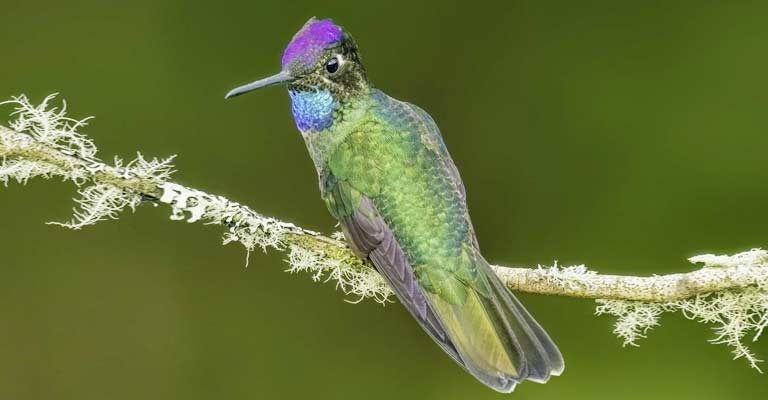
Identifying Characteristics of Rivoli’s Hummingbird
The Rivoli’s Hummingbird, also known as the Magnificent Hummingbird (Eugenes fulgens), is a dazzling and distinctive species found in the western regions of North America, particularly in mountainous areas ranging from Mexico to the southwestern United States.
Identifying this striking hummingbird involves paying attention to several key characteristics that set it apart from other hummingbird species.
Size and Shape
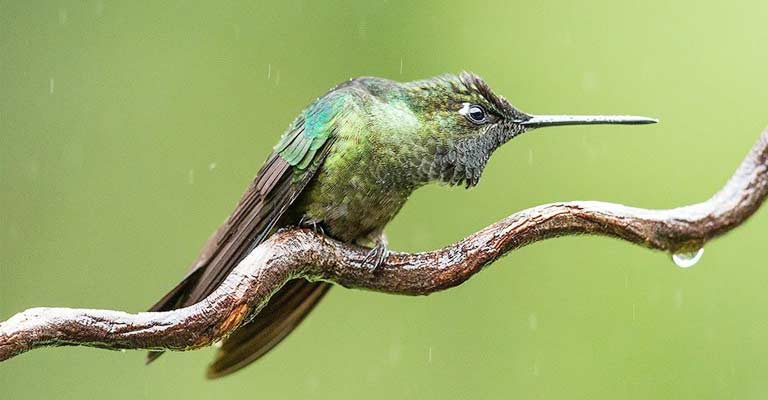
One of the first features to note is the size and shape of Rivoli’s Hummingbird. It is a relatively large hummingbird, measuring about 4 to 5 inches in length.
Its body is robust and stocky compared to other hummingbirds, giving it a more imposing appearance when in flight.
Plumage
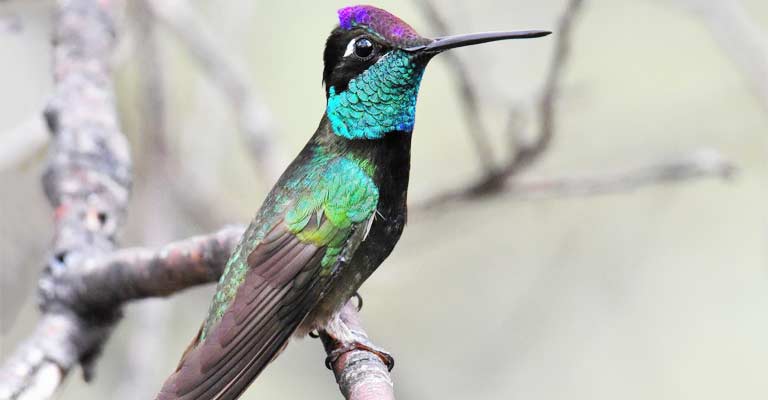
The plumage of the Rivoli’s Hummingbird is truly magnificent and serves as a primary identification factor.
Males boast an iridescent, brilliant green throat and crown, creating a stunning display when the light catches their feathers. The rest of the body is a deep, vibrant blue or violet.
In contrast, females lack the intense colors and are generally more subdued with greenish-bronze plumage on the upperparts and a white belly.
Tail
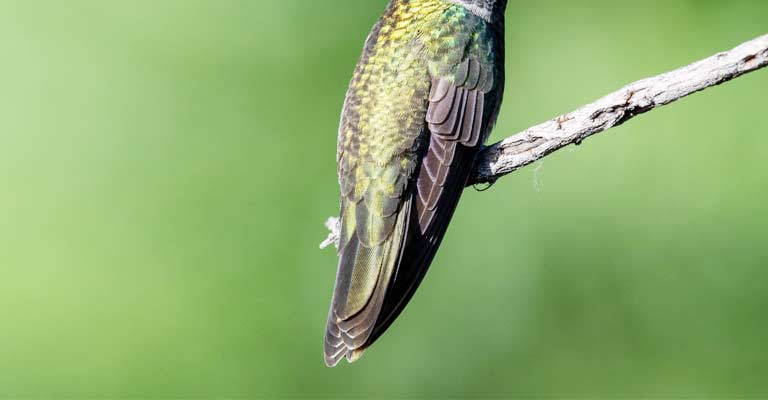
The tail of Rivoli’s Hummingbird is distinctive, featuring long and deeply forked feathers. The tail’s outer feathers have a distinct violet-blue hue, adding to the bird’s overall visual appeal.
The long tail serves both an aesthetic and functional purpose, aiding the bird in agile and precise flight, especially during courtship displays.
Bill

The bill of Rivoli’s Hummingbird is relatively long and straight, perfectly adapted for extracting nectar from flowers.
The bill’s length is a key characteristic distinguishing it from other hummingbird species in its range.
Habitat and Range
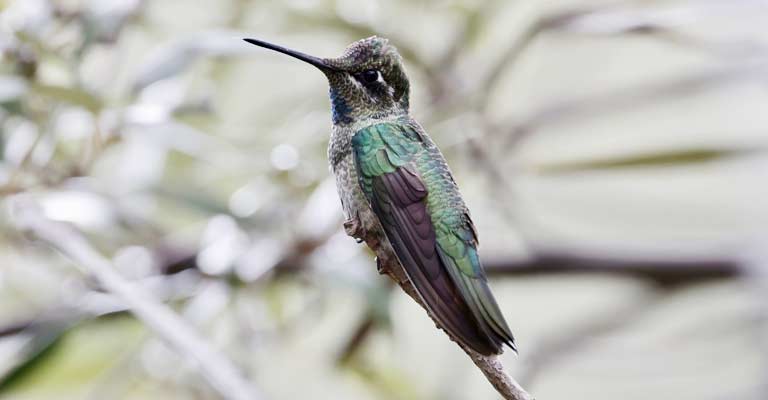
Understanding the habitat and range of Rivoli’s Hummingbird is crucial for identification.
These hummingbirds are primarily found in mountainous regions with pine-oak forests, and they can be spotted at elevations ranging from 3,000 to 10,000 feet.
Knowing the bird’s preferred environment aids in narrowing down potential species during observations.
Behavior
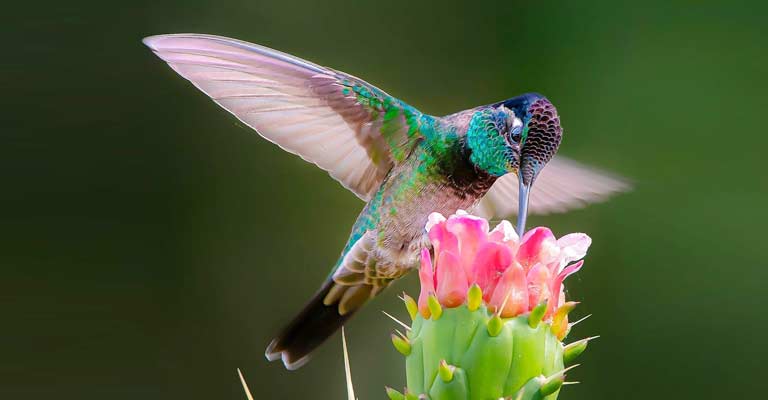
Observing the behavior of Rivoli’s Hummingbird can also aid in identification. They are known for their territorial nature and aggressive interactions with other hummingbirds.
Additionally, their distinctive flight patterns, characterized by rapid wing beats and sudden changes in direction, can help distinguish them from other hummingbirds in the area.
Identifying Rivoli’s Hummingbird involves a careful examination of its size, plumage, tail, bill, habitat, and behavior.
By paying attention to these key characteristics, birdwatchers can appreciate the uniqueness of this species and differentiate it from other hummingbirds in its range.
The combination of dazzling colors and specific physical attributes makes Rivoli’s Hummingbird a truly magnificent and unmistakable bird in the diverse world of hummingbirds.
Taxonomy of Rivoli’s Hummingbird
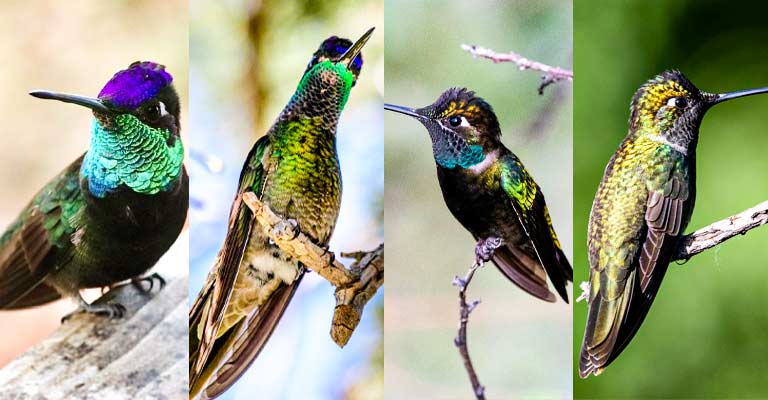
Here’s a table summarizing the taxonomy details of Rivoli’s Hummingbird:
| Taxonomic Rank | Classification |
| Domain | Eukaryota |
| Kingdom | Animalia |
| Phylum | Chordata |
| Class | Aves |
| Clade | Strisores |
| Order | Apodiformes |
| Family | Trochilidae |
| Genus | Eugenes |
| Species | E. fulgens |
This table outlines the hierarchical classification of Rivoli’s Hummingbird, from the broad category of domain down to the specific species.
Understanding the bird’s taxonomic placement provides insights into its evolutionary relationships and biological classification within the animal kingdom.
Rivoli’s Hummingbird, scientifically known as Eugenes fulgens, belongs to the Animalia kingdom, Chordata phylum, Aves class, and the Apodiformes order.
It falls within the Strisores clade and is a member of the Trochilidae family. The genus is Eugenes, and the specific species is fulgens.
As a stunning member of the hummingbird family, its taxonomy reflects its evolutionary position within the broader classification of life, providing a concise overview of its relationship to other organisms and its place in the diverse ecosystem of the Animalia kingdom.
Rivoli’s Hummingbird Life History
Rivoli’s Hummingbird, scientifically known as Eugenes fulgens, is a captivating species that inhabits the mountainous regions of western North America.
Delving into the life history of this magnificent bird reveals a complex and fascinating set of behaviors, adaptations, and challenges that contribute to its survival and existence in its diverse habitat.
Food
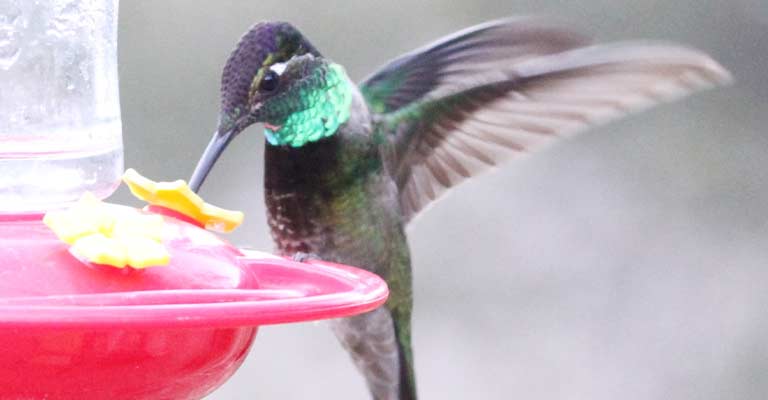
Rivoli’s Hummingbird sustains itself primarily through a nectar-based diet, extracting nectar from a variety of flowering plants.
Their long, straight bills are perfectly adapted for reaching deep into the tubular flowers, while their specialized tongues aid in efficiently collecting the sweet liquid.
In addition to nectar, these hummingbirds also consume small insects and spiders, providing essential protein and nutrients to supplement their energy needs.
Habitat
This species exhibits a strong preference for montane environments, inhabiting pine-oak forests at elevations ranging from 3,000 to 10,000 feet.
The combination of these specific habitat requirements makes Rivoli’s Hummingbird a unique and specialized inhabitant of mountainous terrain.
Range Map
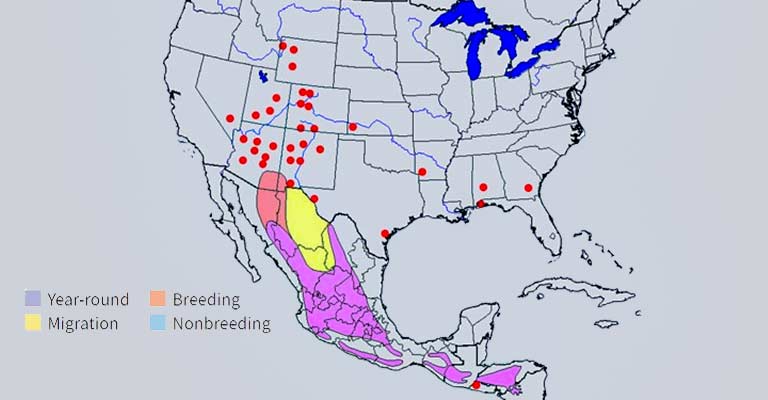
The range of Rivoli’s Hummingbird extends from Mexico through the southwestern United States.
A detailed range map would depict their distribution across various elevations and geographical features, providing valuable insights into their migratory patterns and localized populations.
Nesting
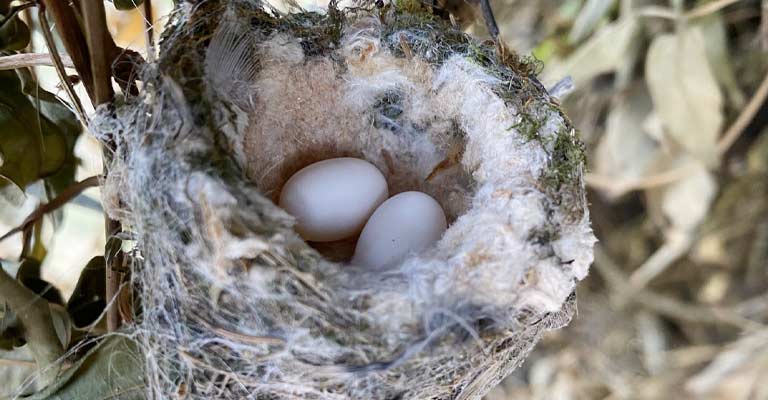
During the breeding season, Rivoli’s Hummingbirds engage in the meticulous construction of cup-shaped nests.
These nests are often situated on horizontal branches in trees, providing a secure and sheltered location for the delicate eggs.
The female takes on the responsibility of constructing the nest using plant fibers, spider silk, and other fine materials, creating a small, well-insulated haven for the upcoming brood.
Here’s a table summarizing nesting details for Rivoli’s Hummingbird:
| Nesting Details | Facts |
| Clutch Size | 1 to 3 eggs |
| Number of Broods | Typically 1, occasionally 2 |
| Egg Length | Approximately 1.0 cm (0.4 in) |
| Egg Width | Approximately 0.6 cm (0.24 in) |
| Incubation Period | About 15 to 18 days |
| Nestling Period | Approximately 21 to 28 days |
| Egg Description | White, small, and elongated with a slight curve at one end |
| Nest Construction | Cup-shaped, constructed with plant fibers, spider silk, and other fine materials |
| Nest Placement | Situated on horizontal branches in trees, often well-insulated for protection |
| Incubation and Parenting | Both male and female share the responsibilities of incubating eggs and feeding nestlings |
| Fledgling Appearance | Resemble adults but with shorter tails; fully feathered and capable of flight upon leaving the nest |
Breeding
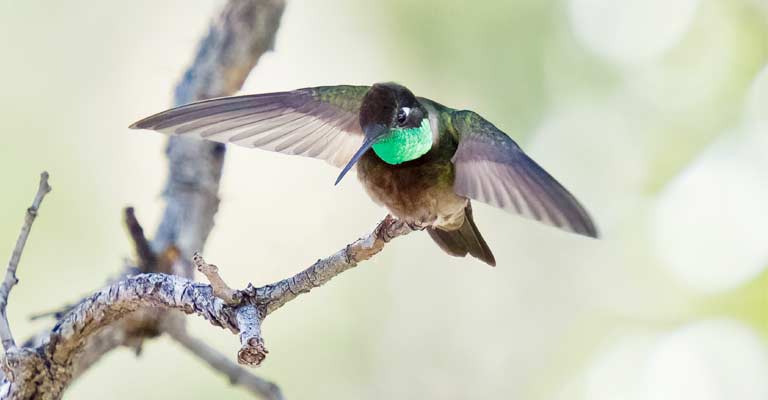
Courtship displays play a crucial role in the breeding behavior of Rivoli’s Hummingbird. Males showcase their vibrant plumage and engage in elaborate aerial acrobatics to attract females.
Once paired, the female lays a clutch of one to three eggs, and both parents take turns incubating the eggs and feeding the hatchlings upon their arrival.
Diseases
Like many bird species, Rivoli’s Hummingbird can be susceptible to various diseases, including avian pox and parasitic infections.
Monitoring for signs of illness, such as lethargy or abnormal behavior, is essential for the health and survival of individual birds and the overall population.
Treatment
In the event of disease outbreaks, conservation efforts may include monitoring and providing medical intervention for affected individuals.
Additionally, habitat preservation and management play a crucial role in preventing the spread of diseases and ensuring the overall well-being of Rivoli’s Hummingbird populations.
Conservation
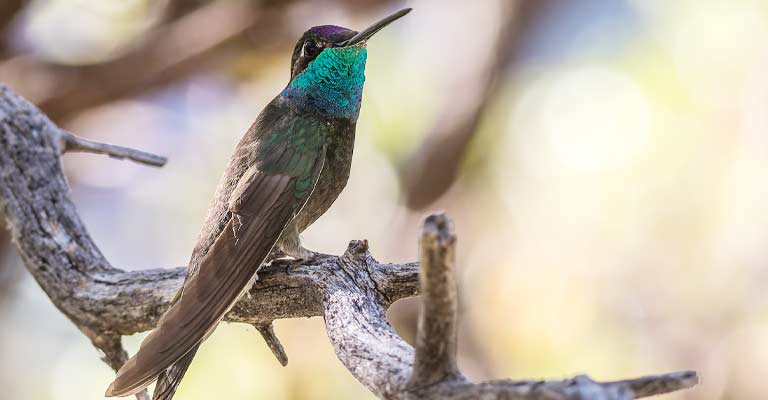
Conservation initiatives for Rivoli’s Hummingbirds focus on protecting their specialized mountainous habitats, preserving crucial food sources, and raising awareness about the significance of these dazzling birds.
Continued research, habitat restoration, and sustainable practices contribute to the long-term conservation of this species and the delicate ecosystems they inhabit.
The life history of Rivoli’s Hummingbird is a tapestry woven with the threads of adaptation, survival strategies, and the delicate balance between ecological components.
Appreciating the intricacies of their food preferences, nesting behaviors, and the challenges they face provides a foundation for effective conservation efforts to ensure the continued existence of this remarkable hummingbird species.
10 Fun Facts About Rivoli’s Hummingbird
Here are some fun facts about Rivoli’s Hummingbird:
- Magnificent Plumage: Rivoli’s Hummingbird is aptly named “Magnificent Hummingbird” due to the stunning and vibrant plumage of the males. The iridescent green throat and crown, coupled with the deep blue or violet body, make them a visually striking species.
- High-Elevation Specialist: This hummingbird species has a unique preference for high elevations. It is commonly found in mountainous regions, ranging from 3,000 to 10,000 feet, showcasing its adaptation to cooler and more challenging environments compared to many other hummingbirds.
- Tail Feathers in Flight: The long and deeply forked tail feathers of Rivoli’s Hummingbird serve both functional and aesthetic purposes. During flight, these tail feathers add to the bird’s agility and maneuverability, creating a distinctive silhouette in the sky.
- Unique Mating Displays: Male Rivoli’s Hummingbirds engage in elaborate aerial displays during the mating season. These displays involve rapid dives, ascents, and intricate maneuvers to attract females. The combination of acrobatics and vibrant plumage makes these displays a spectacle to behold.
- Nesting Altitudes: Unlike many other hummingbirds that nest in lower elevations, Rivoli’s Hummingbird constructs its cup-shaped nests in trees at higher altitudes. The choice of nesting locations reflects their adaptation to the specific environmental conditions of mountainous terrain.
- Territorial Behavior: Rivoli’s Hummingbirds are known for their territorial nature. Males vigorously defend their feeding and nesting territories, often engaging in aggressive interactions with other hummingbirds to assert dominance.
- Unique Feeding Habits: While their primary diet consists of nectar from flowers, Rivoli’s Hummingbirds also consume small insects and spiders for additional nutrients. This eclectic feeding behavior sets them apart from other hummingbird species with more exclusive nectar diets.
- Migratory Patterns: Some populations of Rivoli’s Hummingbird are known to exhibit altitudinal migration, moving between higher and lower elevations based on seasonal changes. This migration pattern is a fascinating aspect of their behavior and adaptation to varied habitats.
- Distinctive Vocalizations: Rivoli’s Hummingbirds are not just visually stunning; they also produce distinct vocalizations. Their calls consist of sharp, metallic notes that may serve various purposes, including communication during territorial disputes or courtship.
- Conservation Concerns: Despite their captivating beauty, Rivoli’s Hummingbirds face threats such as habitat loss and climate change. Conservation efforts are essential to preserving their mountainous habitats and ensuring the continued survival of this unique hummingbird species.
These fun facts highlight the remarkable features and behaviors that make Rivoli’s Hummingbird a captivating and distinctive member of the hummingbird family.
Wrapping Up
Exploring the life history, nesting behaviors, and taxonomy of Rivoli’s Hummingbird unveils a fascinating narrative of adaptation and survival.
From its magnificent plumage to its unique high-altitude nesting preferences, this hummingbird species stands out in the avian world.
Its ecological significance, distinctive behaviors, and conservation needs underscore the importance of understanding and appreciating the delicate balance between this captivating bird and its mountainous habitats.
Rivoli’s Hummingbird serves as a testament to the intricate tapestry of life, where every aspect, from feeding habits to migratory patterns, contributes to its resilience and existence in diverse ecosystems. Thank you so much.